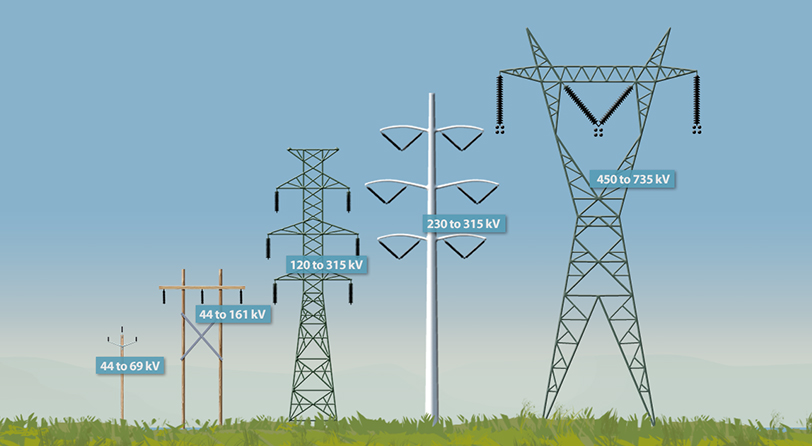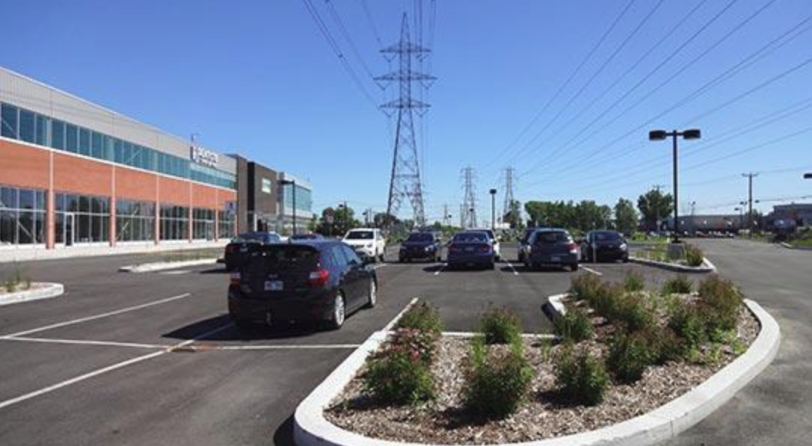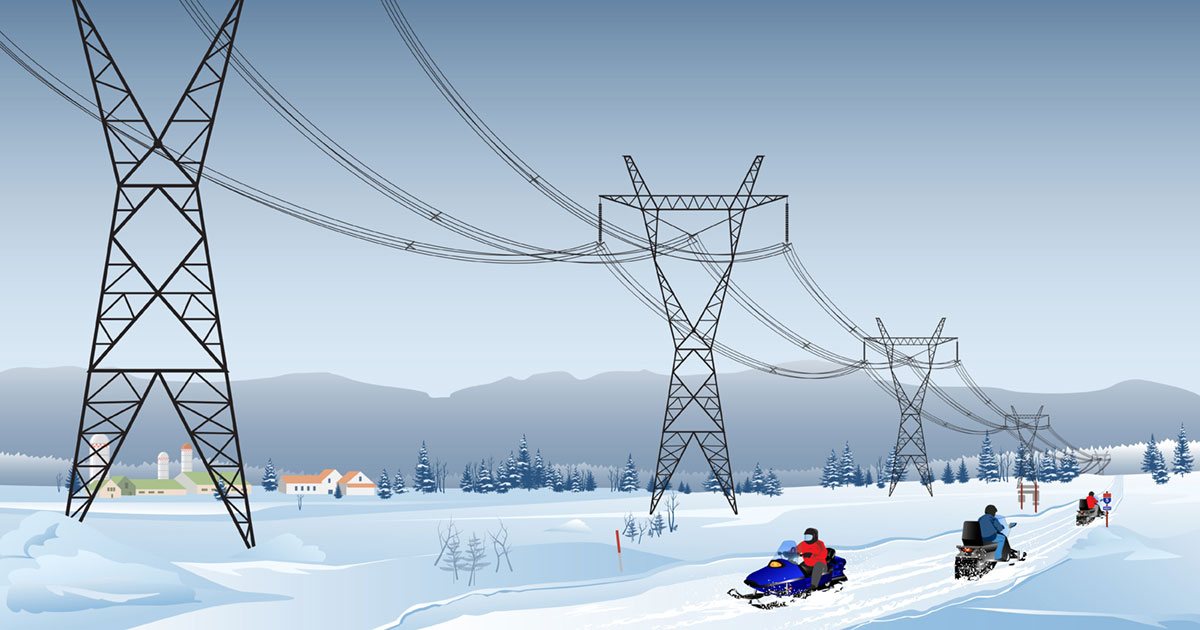Cleared corridors ensure public safety and service reliability, and allow maintenance and repair teams to do their job.
Transmission lines carry power at much higher voltages than distribution lines. That’s why the operating and safety standards of Hydro-Québec and the CSA Group are stringent for transmission lines.
Hydro-Québec’s teams carry out periodic inspections of transmission lines. The inspections serve to check the condition of the equipment and ensure that those who use the rights-of-way comply with Hydro-Québec regulations. Any encroachment or unauthorized activity will be reported and may be subject to a non-compliance notice.

What is prohibited in a transmission line right-of-way
- Building or expanding a structure (house, garage, hangar, shed, blind, tank, etc.).
- Modifying the ground elevation by digging or adding material (no excavating, no filling).
- Storing or stacking (wood, snow, earth, waste, debris, materials, etc.).
- Installing a pool (above-ground or in-ground) or spa.
- Installing a trampoline, water-play structure, camping trailer, clothesline or a fence higher than 2.5 m.
- Parking or voluntarily stopping trucks or heavy equipment, unless necessary. In such a case, avoid touching anything metal when exiting the vehicle unless it is equipped with an anti-static ground strap.
- Circulating with a truck or heavy machinery taller than 4.15 metres (13.7 feet).
- Filling the fuel reservoir of a motor or a generator.
What may be allowed in a transmission line right-of-way with Hydro-Québec’s authorization
When Hydro-Québec has a servitude, or easement, on your property, you may still use the land in several ways.
Below is a partial list of activities that are allowed in a transmission right-of-way, but only if you have written approval from Hydro-Québec.

- Parking vehicles on a daily basis and installing concrete curbing for this purpose.
- Landscaping: planting small trees and shrubs (maximum of 2.5 m high at maturity), installing concrete curbing and lighting.
- Modifying the ground elevation.
- Building a retention pond; you must first purchase the land if it is owned by Hydro-Québec.
- Building a logging road.
- Building an ATV trail.
- Building a bike or walking path, including curbing, lighting, etc.
- Building infrastructure (storm or wastewater sewer, waterworks, streets, public services, lighting, etc.).
- Building a turnaround area with or without a loading dock.
- Operating a tree farm (e.g., Christmas trees, cedars).
- Growing berries.
- Erecting a private power line to connect a home to Hydro-Québec’s distribution system.
- Operating a quarry or sandpit.
- Erecting a metal fence no taller than 2.5 m.
The list is for information purposes only. You must always obtain authorization before carrying out work in a transmission line right-of-way.
Process for obtaining the authorizations required for work in a right-of-way
Important notice:
For the safety and well-being of farmers in transmission line rights-of-way, it is recommended that an anti-static ground strap be installed on all trucks and heavy machinery.
Respect private property.
When riding your snowmobile in agricultural or vacation areas located near Hydro‑Québec’s power system—even under high‑voltage lines—you are almost always on private land.
Some farmers have kindly agreed to have a snowmobile trail on their land. It is important to stay on the trail because going off‑trail can cause seed damage and losses for farmers.
Here are a few other rules to follow at all times:
- Exercise caution, in particular by respecting speed limits.
- Keep far away from towers—at least nine metres!
- Minimize noise and respect private property.
- Do not attempt to enter a rightofway if access is blocked by fences or any other markers.
No official trail? Out of respect for landowners, don’t venture out into wide‑open spaces, even if it’s very tempting!
If you see any signs of Hydro‑Québec equipment failure or damage while on your ride, please call 1 877 816‑1212.

You may also be interested in these pages
- What is a transmission line and why is it in a cleared corridor?
- How does Hydro-Québec control the height of trees in a transmission line right-of-way
- Answers to frequently asked questions about vegetation near transmission lines
- Installation d’un ouvrage dans l’emprise d’une ligne aérienne de transport [PDF 706 Ko - in French only]